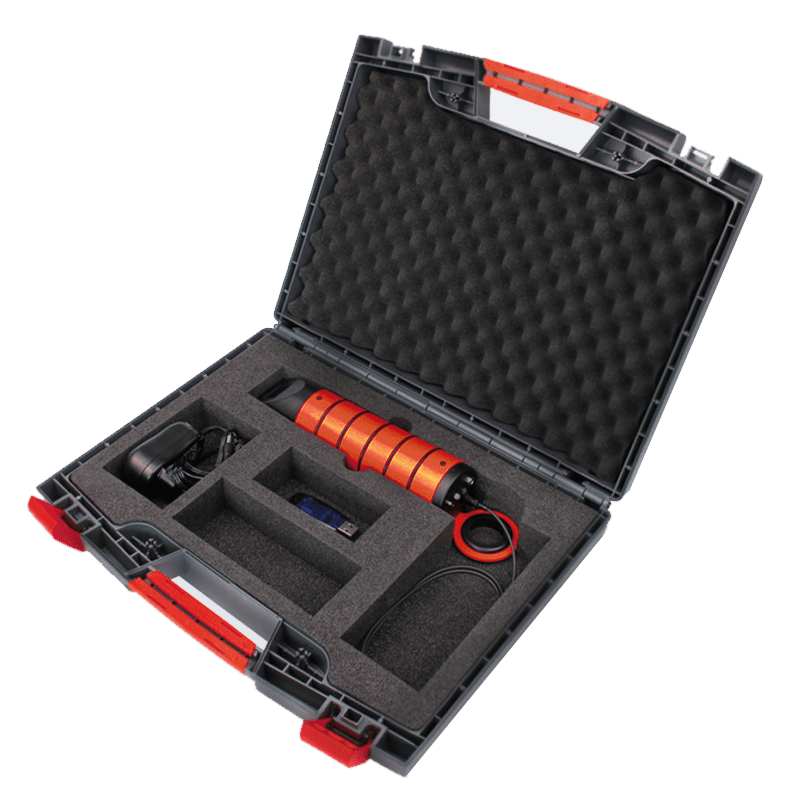
Welding is a process that requires critical handling to achieve excellent results. The term “ID purging” is often heard in the welding industry. Purging aims to remove the residual oxygen from inside the weld zone to help reduce oxidation and enhance corrosion resistance. In the case of pipe and tube welding, weld purging also involves blocking off the pipe with purge dams and monitoring the internal oxygen content with a gauge.
However, maintaining the oxygen content inside a pipe and monitoring it can be a difficult process. With the help of the welding purge oxygen sensor, the oxygen content remaining within the pipe can be easily traced to inform any necessary preventative measures.
Why Is Weld Purging Necessary?
When TIG (Tungsten Inert Gas) welding pipes and tubes for oil and gas, construction, manufacturing, or other similar applications, purging becomes necessary to keep the oxygen away from the weld pool and prevent corrosion. Metals such as stainless steel, titanium, or nickel are vulnerable during welding because at high temperatures they can easily react with other chemical compounds or take in inclusions. The oxygen molecules present near the weld area can easily combine with the heated metal to promote oxidation at the weld root, weakening the joint. Weak joints often contain cracks and inclusion which can be the source of pipeline leakage. Additionally, weld splatters, pitting, and sugaring can also add to the low quality of the weld.
Purging offers a solution to this problem. Purging shields the inside of the pipe during welding from unnecessary contaminants. This is generally performed by following these basic steps:
- Prepare and clean the pipe surface, checking for paint, grease, or rust.
- Seal both sides of the weld with purge dams.
- Pump in the purging gas. The gas used should be inert like argon and helium for TIG welding.
- Join the pipe ends together and weld.
- Monitor the oxygen content in the pipe with a gauge.
Although this is a general technique, its effectiveness cannot be guaranteed. The pressure may rise inside the pipe and provide enough atmosphere to contaminate the weld. This can present a serious issue in biopharma or semiconductor manufacturing, where precision is crucial. The solution to this is the welding purge oxygen sensor.
Verifying the Weld Purge with an Oxygen Sensor
An oxygen sensor acts as a process monitoring tool during high-purity welding. When welding pipes and tubes, the oxygen sensor can be inserted into the pipe to monitor the oxygen level near the backside of the weld. The sensor uses the specialized cell to detect the presence of oxygen. For any oxygen detected, purge dams can be closed, and inert gas like argon can be slowly applied until the atmosphere is evacuated and replaced by the shielding gas. Welding purge oxygen sensors also facilitate:
- Higher weld quality resulting from complete oxygen evacuation before welding
- Minimal gas consumption for purging
- Faster purging due to accurate oxygen level estimates
Depending on purity requirements, portable oxygen sensors may be available to detect oxygen levels between 1 and 1000 PPM (part per million). Combining this with the automation of orbital welding is the best way to ensure the underside of the weld remains defect-free.
A Welding Purge Oxygen Sensor Improves Weld Quality
Rising quality demands and strict welding standards have led industries to find new technologies like oxygen sensors to help reduce the weld’s exposure to the atmosphere and unwanted chemical compounds. This is especially important in high-purity pipe welding where maintaining a smooth and pure interior and exterior surface is necessary. An orbital TIG process with auto weld heads and welding purge oxygen sensors can provide parameter control for ideal purging to ensure high-quality pipe and tube welds.
Arc Machines, Inc. is a leading provider of orbital welding technologies, including welding machines and welding purge oxygen sensors. To learn more about our products, contact sales@arcmachines.com. For service inquiries, contact service@arcmachines.com. Arc Machines welcomes the opportunity to discuss your specific needs. Contact us to arrange a meeting.




